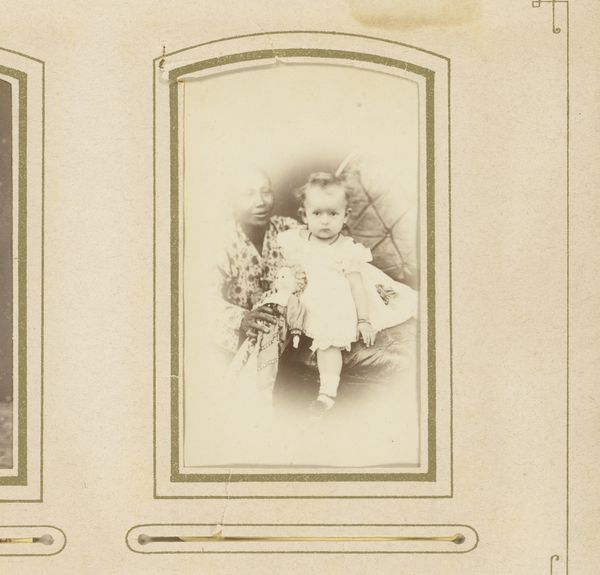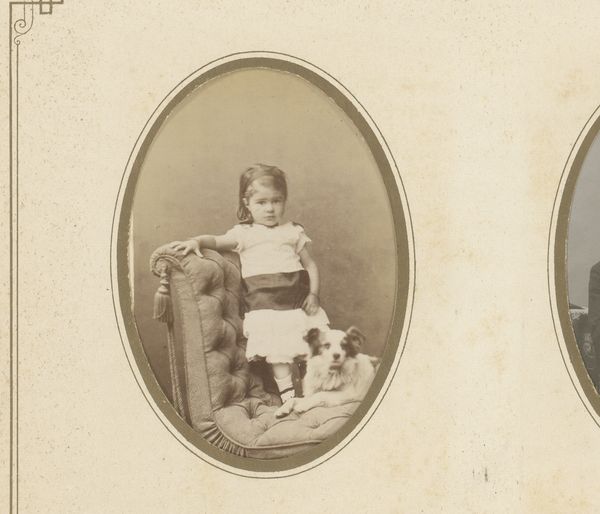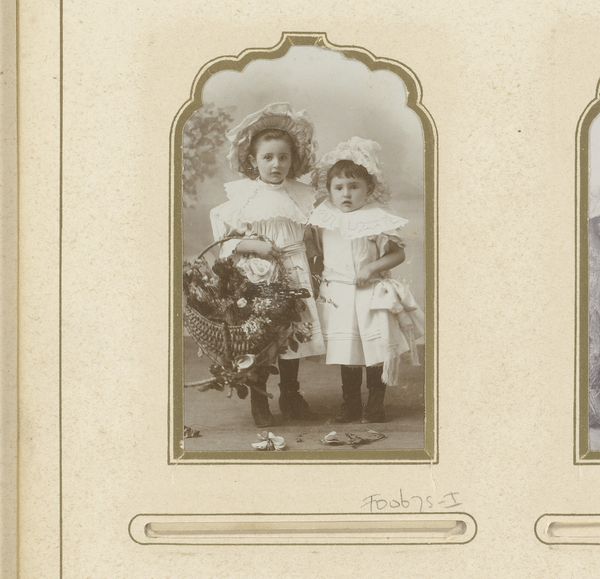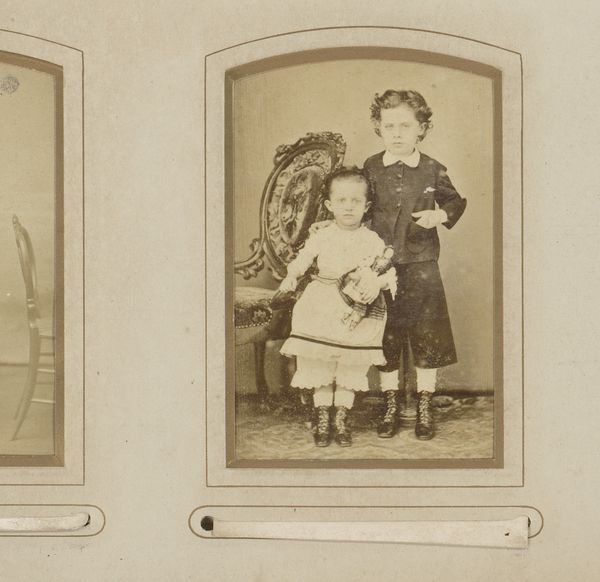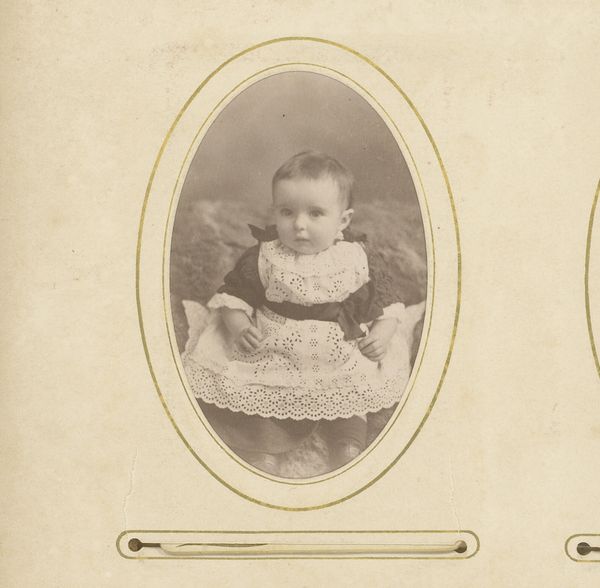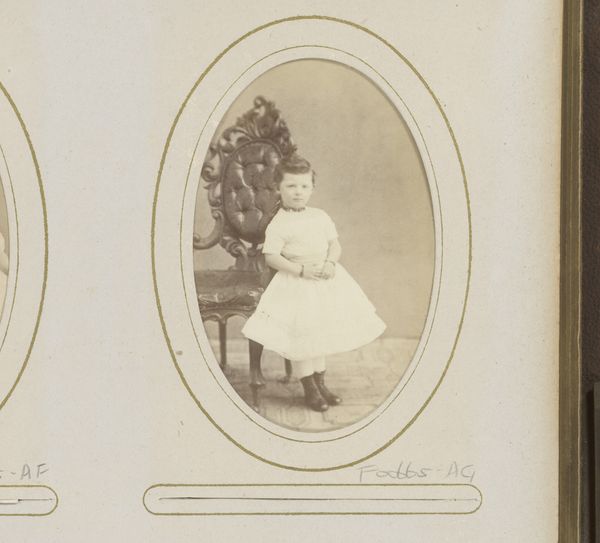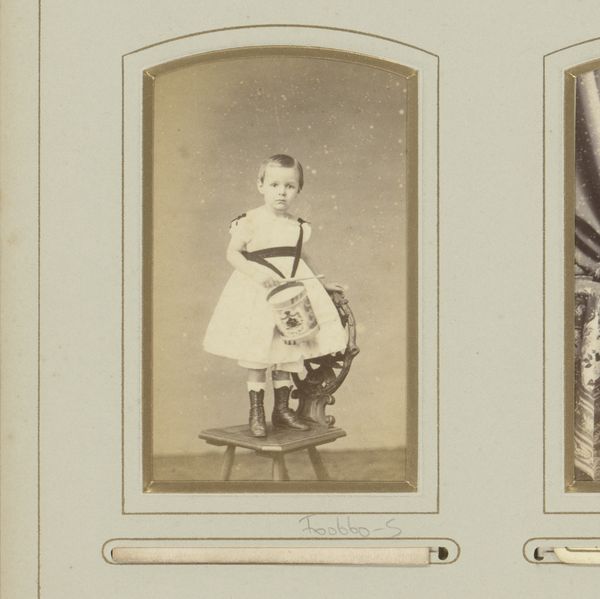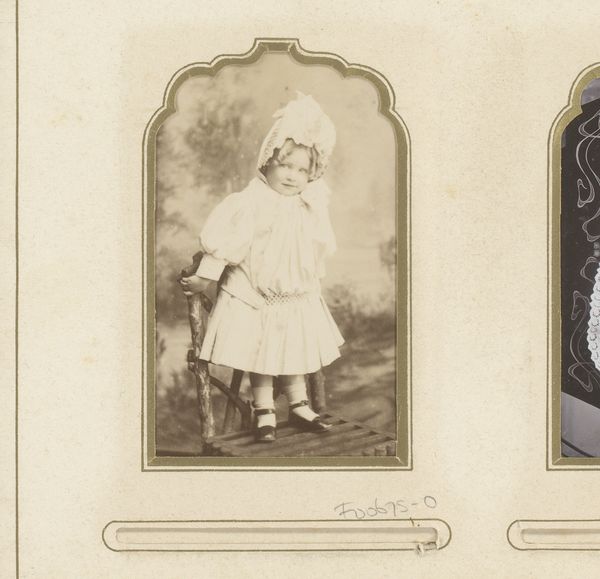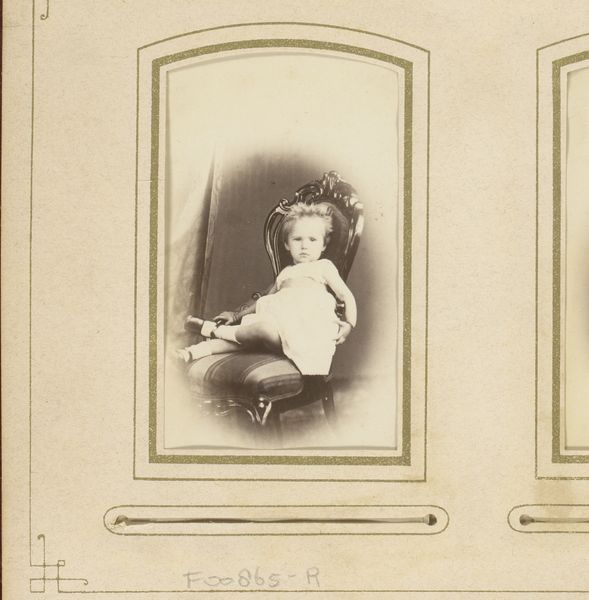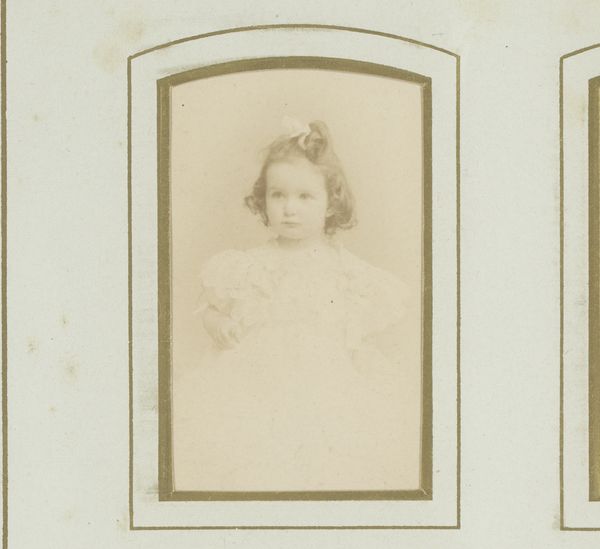
photography, gelatin-silver-print
#
portrait
#
photography
#
historical photography
#
gelatin-silver-print
Dimensions: height 85 mm, width 51 mm
Copyright: Rijks Museum: Open Domain
Editor: Here we have a gelatin-silver print titled "Portret van een staand meisje in een witte jurk bij een sokkel," or "Portrait of a standing girl in a white dress by a pedestal," created by Jacob Niestadt sometime between 1887 and 1916. I’m really struck by the textures; the layers of ruffles on the girl’s dress contrast so much with the hard stone of the pedestal. What do you see in this piece? Curator: Immediately, I think of the industrialization of photography. This gelatin-silver print is not just an image; it's a manufactured object. How were these materials sourced and produced? Consider the labor involved in creating the gelatin emulsion, mining the silver, manufacturing the paper. Even her dress - think of the labour and resources needed to produce that much white fabric at this period in time! Editor: That’s interesting! I was focused on the aesthetic elements, but you’re drawing attention to the labor and resources. Does the white dress also mean something in that historical context? Curator: Precisely! White fabric was expensive and difficult to maintain, suggesting a certain social class and wealth on the part of the girl's family. We might also wonder: who is the actual consumer here? The parents commissioning a likeness of their child? What statement are they making about their family through the material choices evident in this photo? Editor: So you’re saying the photograph functions as a kind of commodity, reflecting not only artistic skill, but also economic and social structures? Curator: Absolutely. We have to remember the photograph itself, regardless of subject, is a material object produced and consumed within a specific system of economic and social relations. This opens up richer veins for interpretation than pure aesthetics can provide. Editor: That’s given me so much to consider, moving beyond the image to the entire system of production. Thanks! Curator: Likewise. It's rewarding to discuss the means behind the image rather than what’s on the surface.
Comments
No comments
Be the first to comment and join the conversation on the ultimate creative platform.


